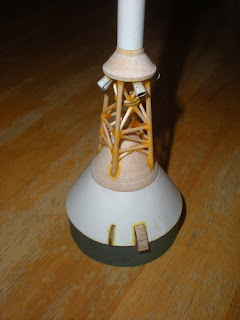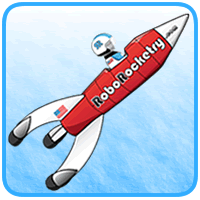
Many rocketeers create ingenious jigs, measuring tools and other devices that make building rockets much easier with better results. We also find things that are already available around the house, office or shop to use in our sky bound pursuits.
I use one such device in my office enough that I decided to put in a quick post.
At my desk I have a KVM (Keyboard-Video-Mouse) switch that I use to switch between 1-4 computers. I have my work machine on one channel, my home machine on another, a docking station on one for the laptop and another for an extra set of cables under the desk. That is for connecting family and friends' computers that make their way over from time to time for troubleshooting.
Anyway, the space between the D-Sub connectors in the back works perfectly for holding up to four fins in an upright position while glue sets up a little. The steps I usually follow are below.
1. Mark fin and launch lug lines on body tubes.
2. Mark the very end of the tube at the fin and launch lug lines. (This is for sighting as you are lining the fins up, especially if the fins are glued clear up to the edge.)
3. Put a bead of glue on one of the fins root edges and then use that to apply a line of glue to each line on the body tube where the fins will be glued.
4. Put another bead of glue on that fin and stand it up in the KVM switch.
5. Do the same for the other fins.
6. After about a minute of setting time, start attaching your fins. If need be, you can put another small bead of glue on the root edge if it has set too much.
7. This technique allows for good strong bond and makes it easier to put all fins on one right after another for good alignment.
8. When they are all on, stand the tube on its end with the fins up.
9. Sight down each fin and make sure they are lined up properly and check for uniformity in relation to each other. They should all be sticking out perpendicular to their attachment points.
10. Once they are all set fine, let they dry strong and then come back and apply your fillets to the fin joints. On smaller rockets I only apply the fillets once, but on larger rockets that use higher impulse motors, I may make several layers to the fillets till I achieve the size and shape I want.
Hope this helps for any computer geek/model rocket engineer that may have a KVM at their desk.


I also use Titebond II for all of my rockets that fly on A-E motors. This sets faster and is easier to work with than Elmer's/white glue. I also buy a large 32 oz or larger container and refill the small 4 oz bottle I use for actual gluing. This saves money on glue and is very convenient. For the high powered rockets I am using an epoxy.
















































